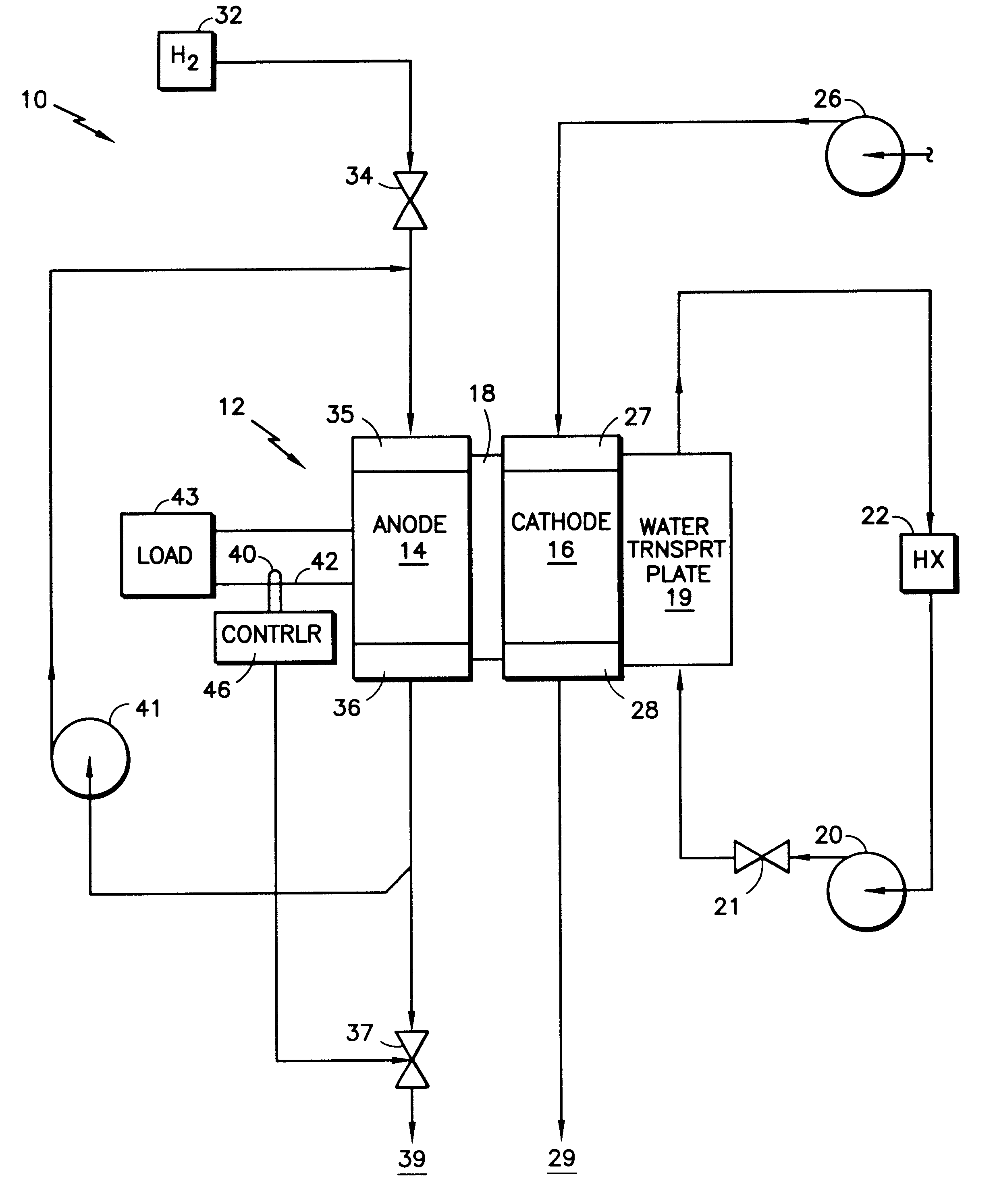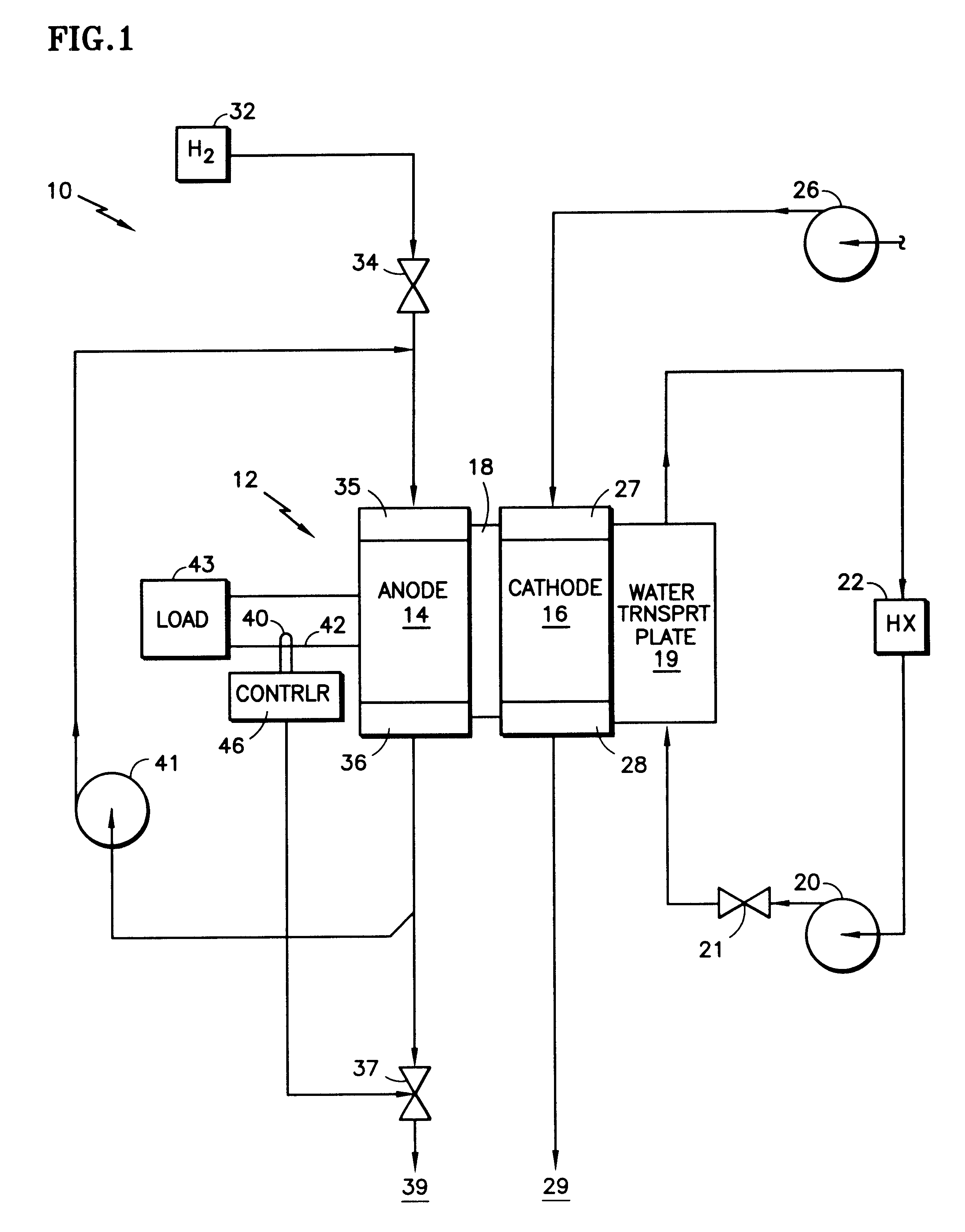High fuel utilization in a fuel cell
a fuel cell and high fuel utilization technology, applied in the direction of fuel cells, solid electrolyte fuel cells, electrical equipment, etc., can solve the problems of reducing the overall efficiency of the power plant, reducing the efficiency of the electric power generation process, and affecting the efficiency of the overall power plant, so as to achieve the highest possible overall efficiency and improve the fuel consumption in the fuel cell
- Summary
- Abstract
- Description
- Claims
- Application Information
AI Technical Summary
Benefits of technology
Problems solved by technology
Method used
Image
Examples
Embodiment Construction
Referring to FIG. 1, a fuel cell power plant 10 includes a cell stack assembly 12 which comprises a plurality of individual fuel cells stacked together in contiguous relationship, although only a single cell is illustrated in FIG. 1. A fuel cell includes an anode electrode 14, a cathode electrode 16, and a polymer electrolyte membrane 18 disposed between the electrodes. Each electrode consists of a catalyst, a porous support plate and a reactant flow field as is well known. A water transport plate 19 (or coolant plate), adjacent to the cathode 16, is connected to a coolant control loop including a coolant pump 20, a coolant pressure valve 21, and a heat exchanger 22. There may be a heat exchange bypass and other water management apparatus, not shown, as disclosed in U.S. Pat. No. 5,503,944. The pump 20 and valve 21 will regulate both the pressure and the volume of flow through the water transport plate 19 and through, or around, the heat exchanger 22. Air is supplied by a blower 26 ...
PUM
 Login to View More
Login to View More Abstract
Description
Claims
Application Information
 Login to View More
Login to View More - R&D
- Intellectual Property
- Life Sciences
- Materials
- Tech Scout
- Unparalleled Data Quality
- Higher Quality Content
- 60% Fewer Hallucinations
Browse by: Latest US Patents, China's latest patents, Technical Efficacy Thesaurus, Application Domain, Technology Topic, Popular Technical Reports.
© 2025 PatSnap. All rights reserved.Legal|Privacy policy|Modern Slavery Act Transparency Statement|Sitemap|About US| Contact US: help@patsnap.com



